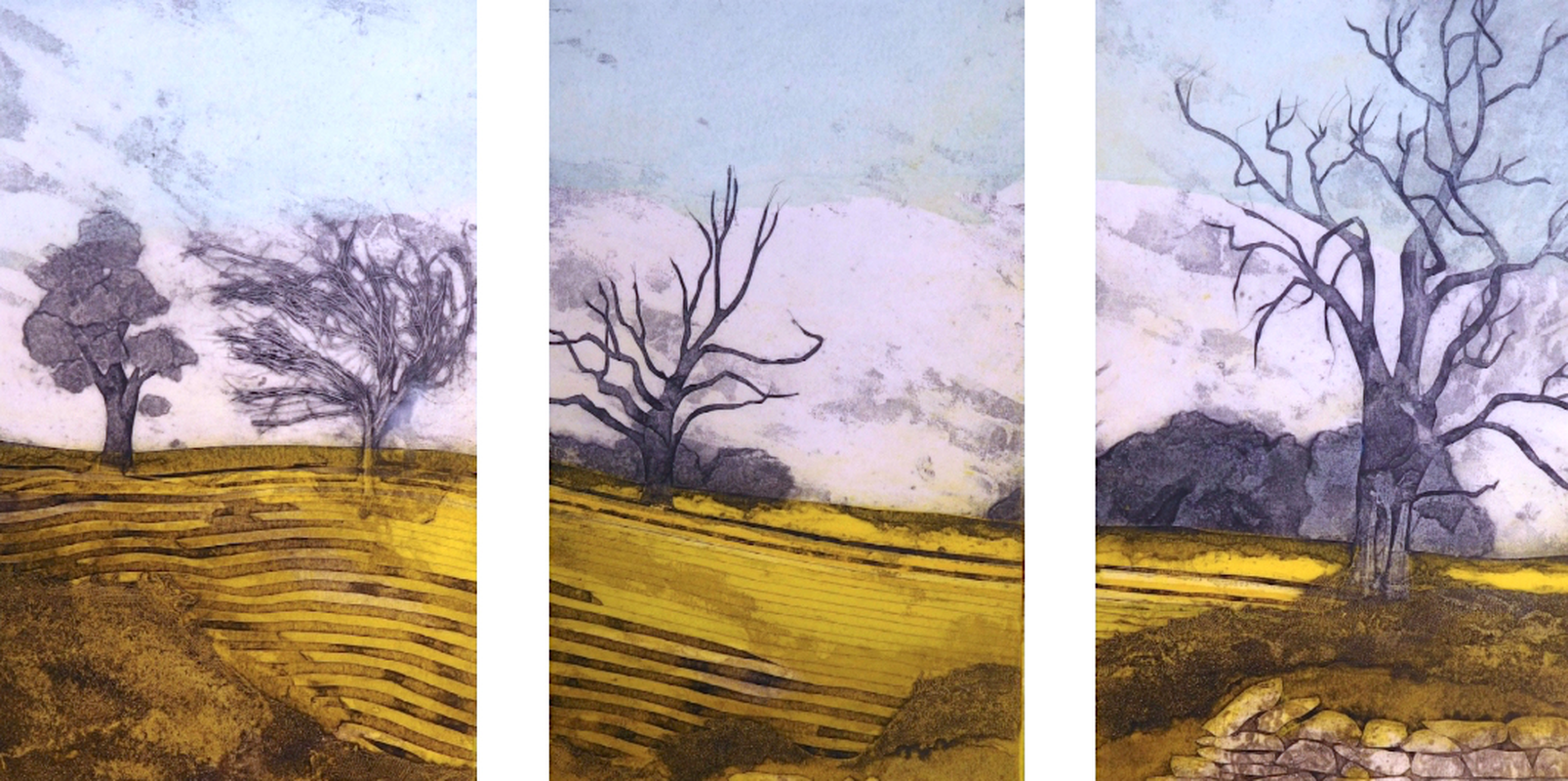
SARAH ROSS-THOMPSON AND THE ART OF COLLAGRAPHED PRINTS
I interviewed artist Sarah Ross-Thompson whose exceptional Collagraphed prints use fabrics, lichen, porridge and string to create images of the dramatic Scottish Highlands where she
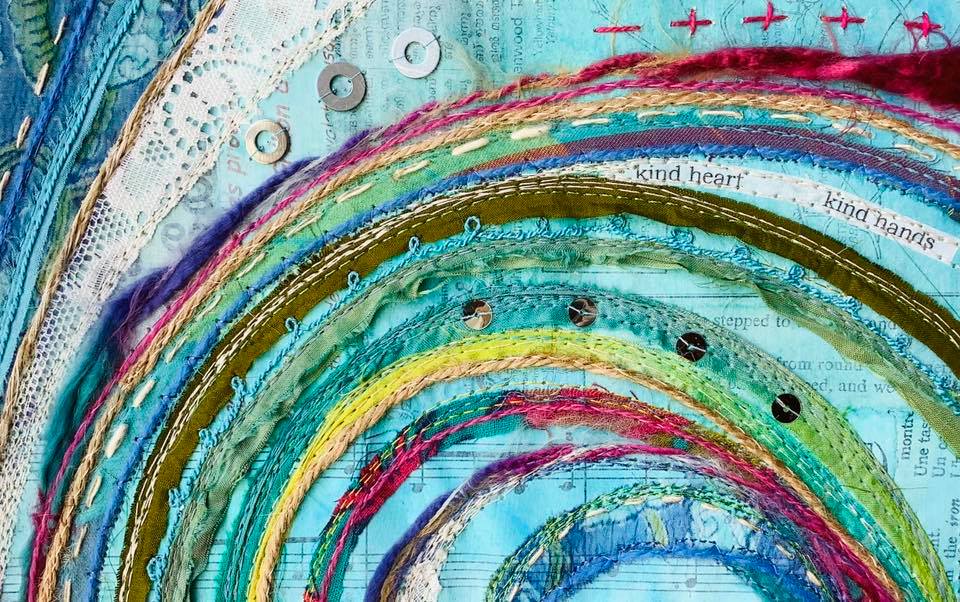
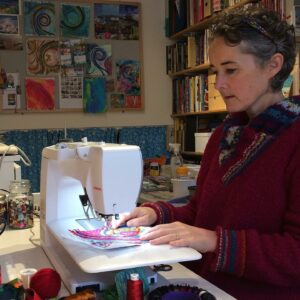
I interviewed artist Isobel Moore, who says about herself: “I am a visual artist from East Sussex, originally from London. A domestic sewing machine is my tool of choice! I am inspired by colour and pattern, and I enjoy nothing better than finding an unwanted piece of fabric and breathing new life into it by adding it to my work. As well as colourful recycled fabrics, I love using old lace, beads, buttons, and recycled papers like maps and music. I have recently started to experiment with paint.”
Leslie: As a textile artist there are several unusual materials you use. Can you describe how you learned your textile skills and how and why you added other artistic effects/materials?
Isobel: I’ve always had urge to create, but I wasn’t particularly artistic at school, so I took a different path. It was when I was approaching my thirtieth birthday and about to start a family, that I made the decision to invest the time away from work in taking my creativity seriously. I eventually spent nearly ten years learning machine embroidery through City & Guilds, finishing with the Diploma in Stitched Textiles and going straight into teaching evening classes.
I learned to use a sewing machine at a young age, with my maternal grandmother. She encouraged me to have a go, and also inspired me by the things she created from leftover scraps of fabric. For example, she always wore an apron to cook, made out of scraps of recycled fabrics from other household projects. She allowed me full access to her scrap baskets which contained all sorts of delicious scraps from when she’d made the curtains and cushions in her house. She was one of the “make do and mend” generation, and she saved everything, from rubber bands to the backs of cereal packets. It meant that there was always a supply of materials that could be used for creative projects. She was artistic too, and more than happy to supply felt pens, pencils and paper and encourage creative play.
It was partly from her that I inherited my need to collect and keep things “in case they might be useful”, but a short stint as a primary school teacher meant that I was forever washing and keeping bits and pieces, such as yoghurt pots to use for glue pots in the classroom. Combine that with more recent volunteering in a charity shop, where all sorts of bits and pieces regularly arrive looking for a new home, and it becomes a habit that once started is very hard to break!
As well as being a magpie for materials, I’m also a bit of a magpie for ideas. Pinterest was a disaster for me when it first came out – I could be lost for days once I started delving into all the possibilities and ideas, but it has led to some interesting creative projects. For example, on the hunt for an easy art project to do with children at a local art festival, I came across the idea to weave colourful wool around old CDs – the sort that used to be given away in newspapers. Charity shops were giving them away in their hundreds, as they couldn’t sell them. The art project was popular, but I was left with a large box of CDs looking for another project. I tried felting wool around one, then cut holes and embroidered the edges, to allow the sparkle of the CD to shine through. This became the centre of a piece of embroidery that attracted the first followers to my Facebook page. I’ve since tamed my Pinterest habit, and I’m slowly beginning to tame my magpie tendencies: as much as I like ideas and possibilities, I do also like a clear, clutter-free studio!
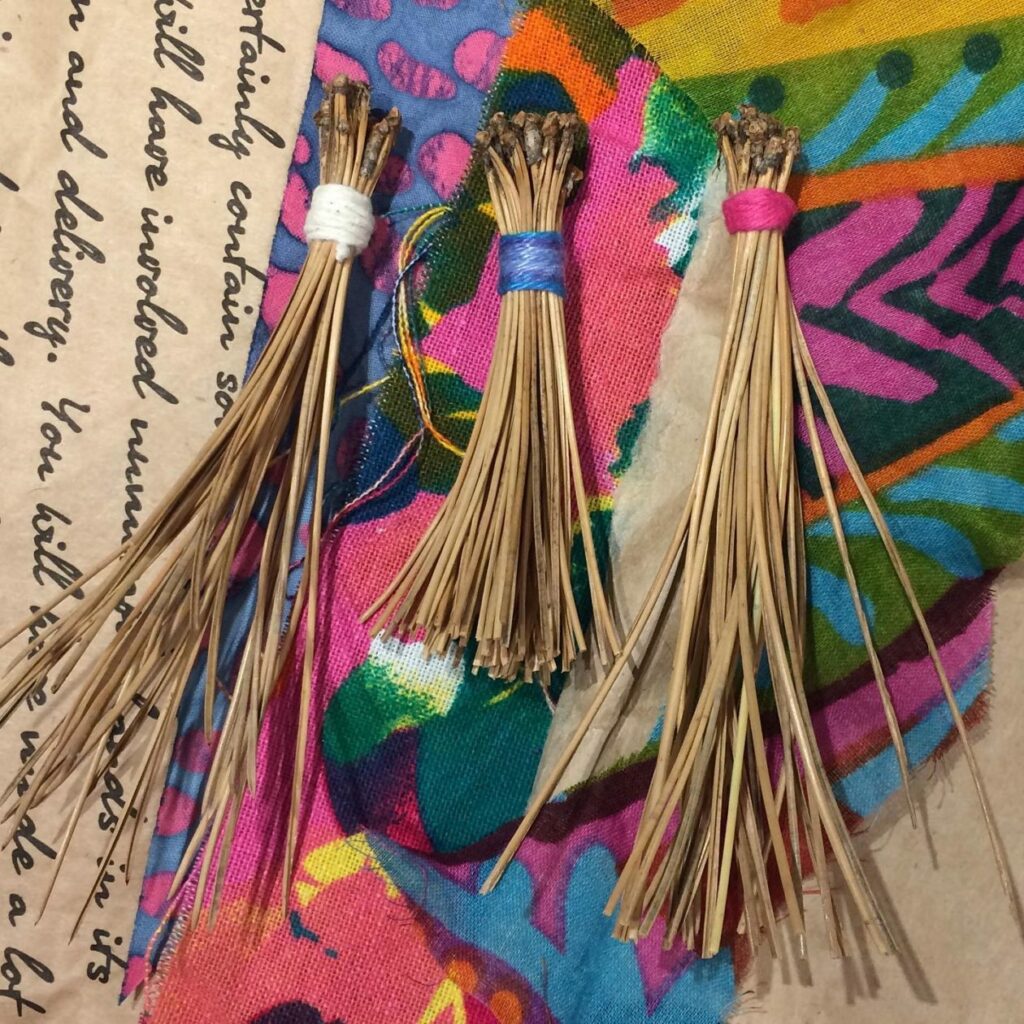
Leslie: How have you researched and put into effect ecological considerations about your art?
Isobel: I have had the occasional wobble about using a sewing machine, as obviously it consumes electricity. There is another textile artist, Harriet Riddell, who has a pedal-powered machine – but I haven’t looked seriously into taking this route! In the great scheme of things, a sewing machine isn’t that much of an environmental impact, and I have a Bernina, a very good brand of machine that should last for decades. Even if I decide to upgrade, it will be highly sought after and will probably never be scrapped.
A more significant consideration for me is the material I use in my work. Because of my childhood inspirations, I like to use recycled fabrics, cottons in particular. While cotton itself has a huge negative environmental impact, being one of the World’s most thirsty crops, by reusing every tiny scrap, I am helping to mitigate some of the damage. I hate to see fabrics thrown away: another charity shop bonus is the bargain bin, where clothes that are damaged, stained or otherwise unsold are offered for pennies before being sold for rag. I rescue lots of things from these bins, and cut away the cuffs, collars and zips that I don’t need, and salvage the fabric and buttons. I don’t just look for natural fabrics such as cotton, linen and silk (although they are my favourites), I will also rescue colourful polyester scarves and other fabrics, if they look interesting to me.
There has been a trend to use various man-made materials in textile art, such as spun-bound polyester fabrics and Tyvek, a polyethylene material used for a variety of applications such as security envelopes and even roofing. These materials distort and melt with the application of heat, creating interesting effects and textures, but I steer well away from them. While the makers of Tyvek say it can be recycled, just like plastic bottles, and Lutradur is actually made from plastic bottles, they are still oil-based materials and still a by-product of an extractive industry.
Leslie: Can you describe, please, your sources of inspiration and how you keep them as part of the work.
Isobel: I love wild landscapes, and the coasts around Brittany and Scotland, as well as Celtic knotwork and other ancient symbols and rock carvings, and I love old, ethnic textiles such as Indian embroidered and embellished cloth, and African woven and mud-printed cloth. I’m forever collecting shells, leaf skeletons, petals and pine needles. I have sometimes used these as direct inspiration, but mostly they inspire in me the urge to create something, or to express my feelings about them.
I am most commonly inspired to actually get started on a new project by the materials themselves: It’s usually when I’m rummaging around for recycled fabrics, that I will spot a pattern or a colour that appeals. I then combine this with other scraps, in a form of collage, and an idea is born. I work in a very intuitive way, and let each piece tell me what needs adding next. When I’m in full flow, I end up surrounded by heaps of fabrics and threads, and choose from what I have to hand. I never go out and buy materials specifically for a project. I don’t plan, any more than having a loose idea in my head of what I want it to look like when I’ve finished. Sometimes I doodle the details in my “ideas” book, to work out how to solve particular problems that arise as I stitch, but most of my problem solving takes place in my head and I think it through whilst doing other things, like walking the dog.
Leslie: Can you also describe, please, the personal, ritual, habitual and quirky things you do to stay on task and stimulate new ideas/approaches (including using your non-dominant hand).
Isobel: I am appalling at staying on task. I am a chronic procrastinator. I need a looming deadline to make a start. Initially this was due to my perfectionist tendencies, but nowadays I think it’s linked to Imposter Syndrome: as more people follow me and take an interest in what I do, the stakes seem higher – making it harder to start.
My next problem, once I’ve started a project, and got a certain way with it, made the key decisions and worked all the problems out, is that my mind has moved on to the next project! Again, this is where a deadline really helps as it focuses my mind to get things finished.
Up until now, the Pomodoro method of using a kitchen timer for short stints of work has been the most successful trick I’ve tried to stay on task. I’ve just started a podcast with a good friend, a fellow textile artist, so I’m now committed – in a very public way – to actually do what I’ve said I will do, so I can report back on it in the next episode! I think this may prove to be the most effective time-management tool yet: even though we only record every other week, it’s a usefully short deadline.
Using my non-dominant hand with embroidery is a bit of a non-starter, but I have recently started painting and I’ve discovered that the marks I make with my left hand are my favourite. They are intentional, but with enough unpredictability to be interesting.
Leslie: Can you describe, please, the different ways you use sketchbooks.
Isobel: Historically, I’ve never used what I would call a “sketchbook”. I’ve always had what I call “idea” books. These are sketchbooks in that they have blank paper, but I use them to write notes and jot down ideas in words, with the occasional doodle or diagram to work something out. I also have lots of books that are more scrapbooks, with photos, postcards and snippets from magazines of things that have caught my eye. I do not have a regular “drawing” practice, and it’s only this last year, during lockdown, that I’ve actually completed a couple of sketchbooks, and then only because I was taking some online art courses. I do love the idea of sketchbooks, and would love to have a juicy stack of them, but it’s still a dream.
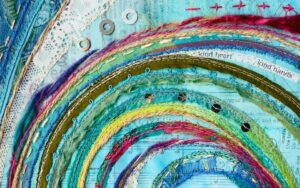 Leslie: What experiences have left the deepest impression on you and your art? How have these seminal experiences shaped you and what you create?
Leslie: What experiences have left the deepest impression on you and your art? How have these seminal experiences shaped you and what you create?
Isobel: After years of playing around with a sewing machine to make clothes and pencil cases, and dabbling with other textile crafts such as rag rugging and silk painting, the day I learned to make felt was the turning point. I fell in love with feltmaking, and that day course led to another day where we learned to use a sewing machine to embroider the handmade felt. It was like coming home.
Shortly after, I enrolled in a beginner’s machine embroidery course and my tutor said to me at the end of the course: “have you ever thought about doing this?” to which I instantly replied “YES!” – I just hadn’t realised it until then! I haven’t looked back since.
You can listen to a podcast with Isobel Moore & Gina Ferrari talking about ‘life in general, and art and embroidery in particular’ here.
In next week’s interview, author Maggie Richell-Davies talks about winning the Historical Writers’ Association 2020 Unpublished Novel Award, and being published late in life.
ABOUT LESLIE TATE’S BOOKS:

I interviewed artist Sarah Ross-Thompson whose exceptional Collagraphed prints use fabrics, lichen, porridge and string to create images of the dramatic Scottish Highlands where she
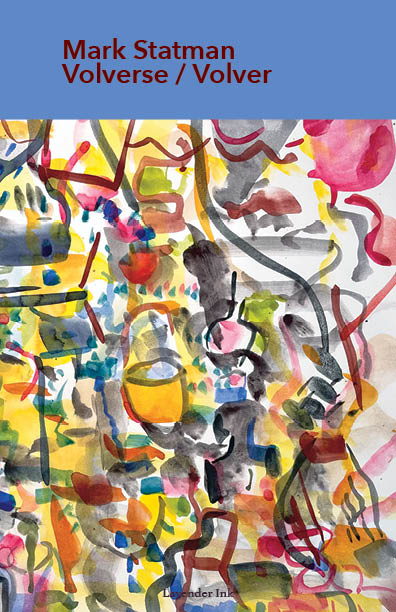
Part 2 of my interview with Mark Statman looks closely at Mark’s Latin American poetic influences, his life in Mexico and ends with an extract
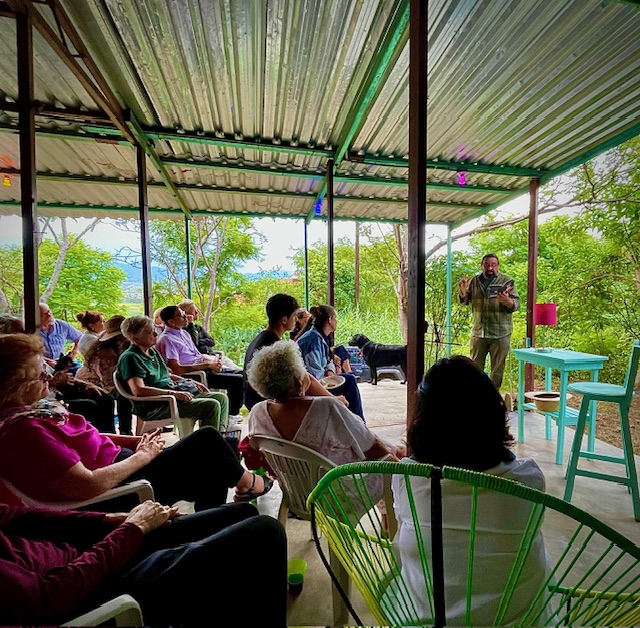
I interviewed international poet and translator Mark Statman about Volverse/Volver, his 14th published collection. Mark, who has won national arts awards, is Emeritus Professor of Literary

I interviewed Lisa Dart, finalist in the Grolier, Aesthetica and Troubadour Poetry Prizes and author of The Linguistics of Light (poems, Salt, 2008), Fathom (prose
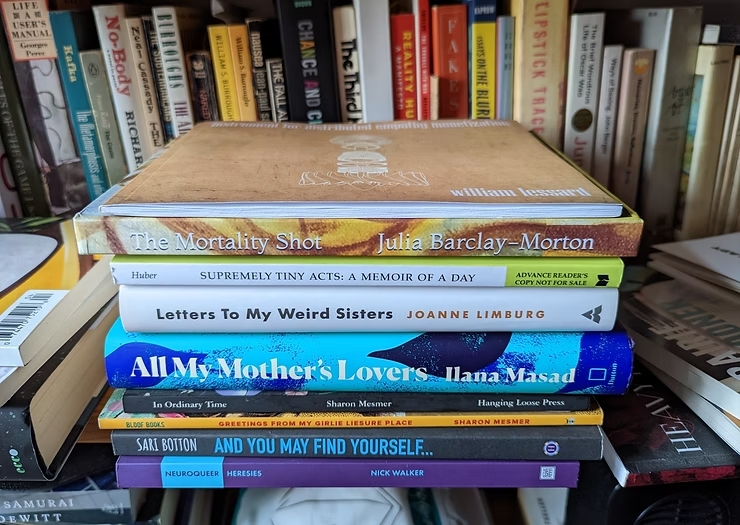
I interviewed writer Julia Lee Barclay-Morton about her experience of autism. Julia began as an experimental dramatist in New York, moving to the UK to
| Cookie | Duration | Description |
|---|---|---|
| cookielawinfo-checkbox-analytics | 11 months | This cookie is set by GDPR Cookie Consent plugin. The cookie is used to store the user consent for the cookies in the category "Analytics". |
| cookielawinfo-checkbox-functional | 11 months | The cookie is set by GDPR cookie consent to record the user consent for the cookies in the category "Functional". |
| cookielawinfo-checkbox-necessary | 11 months | This cookie is set by GDPR Cookie Consent plugin. The cookies is used to store the user consent for the cookies in the category "Necessary". |
| cookielawinfo-checkbox-others | 11 months | This cookie is set by GDPR Cookie Consent plugin. The cookie is used to store the user consent for the cookies in the category "Other. |
| cookielawinfo-checkbox-performance | 11 months | This cookie is set by GDPR Cookie Consent plugin. The cookie is used to store the user consent for the cookies in the category "Performance". |
| viewed_cookie_policy | 11 months | The cookie is set by the GDPR Cookie Consent plugin and is used to store whether or not user has consented to the use of cookies. It does not store any personal data. |
6 responses
Thanks you. I found some of the detail in this interview very interesting. Would love to see more of this artist’s work.
Hi Barbara. You can see more of Isobel’s work here https://www.isobelmoore.co.uk/
Thoughtful interview witb Isobel
🙂 🙂 🙂
I am a GCSE textiles student looking for artists who relate to my theme to study and your piece on Isobell Moore was so hepfull. Thanks so much
I’m glad it worked for you Alice!